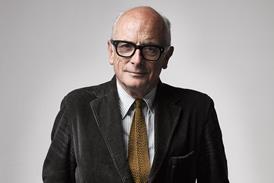- Home
 Green light for DLA’s £425m scheme to build nearly 1,500 homes in Woolwich
Green light for DLA’s £425m scheme to build nearly 1,500 homes in Woolwich University of Cambridge converts Part 2 degree apprenticeship into regular part time course
University of Cambridge converts Part 2 degree apprenticeship into regular part time course Peter Murray launches bid to run for London mayor in 2028
Peter Murray launches bid to run for London mayor in 2028 What made this project… The School of Science, Engineering + Environment (SEE) by Sheppard Robson
What made this project… The School of Science, Engineering + Environment (SEE) by Sheppard Robson
- Intelligence for Architects
- Subscribe
- Jobs
- Events

2025 events calendar Explore now 
Keep up to date
Find out more
- Programmes
- CPD
- More from navigation items
Rydon director ‘haunted’ by lack of challenge to Grenfell cladding design

Emotional boss believed design process had been correctly followed
The director overseeing main contractor Rydon’s work on the Grenfell Tower refurbishment has admitted to being “haunted” by the lack of scrutiny the ill-fated project’s cladding and window designs were subjected to.
Stephen Blake, who was Rydon’s refurbishment director on the project – and who also filled in as contracts manager in its final months – said that in hindsight key elements of the tower block’s refurbishment had been presumed to be correct when they were not.
This content is available to registered users | Already registered?Login here
You are not currently logged in.
To continue reading this story, sign up for free guest access
Existing Subscriber? LOGIN
REGISTER for free access on selected stories and sign up for email alerts. You get:
- Up to the minute architecture news from around the UK
- Breaking, daily and weekly e-newsletters
Subscribe to Building Design and you will benefit from:

- Unlimited news
- Reviews of the latest buildings from all corners of the world
- Technical studies
- Full access to all our online archives
- PLUS you will receive a digital copy of WA100 worth over £45
Subscribe now for unlimited access.


